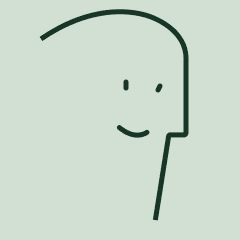Learn more about personaldevelopment with this collection
How to focus on the present moment
How to improve relationships through mindful communication
How to reduce stress and anxiety through mindfulness
Describing wonder
Wonder is said to be a childish emotion. However, as adults, we experience it when gaping at something unexpectedly spectacular.
Adam Smith, an 18th-century moral philosopher, describes wonder as something new and singular that is presented, and memory cannot find any image that nearly resembles this unique appearance.
139
700 reads
Bodily symptoms
The bodily symptoms of this strange appearance point to three dimensions:
- Sensory: The marvelous things take hold of our senses - we stare and widen our eyes.
- Cognitive: We are perplexed because we don't have a past experience to understand them. It leads to a suspension of breath, similar to when we are startled.
- Spiritual: We look upwards in veneration, which makes our heart swell.
135
444 reads
The scale of wonder
At the mild end of this emotion, we talk about things being marvelous. More intense emotions might be described as astonishing. The extreme of this experiences is met with expressions of awe.
111
433 reads
Wonder is crucial for science
- French philosopher René Descartes described wonder as the emotion that motivates scientists to investigates phenomena.
- Socrates said that philosophy begins with wonder - wonder leads us to try to understand our world.
- Richard Dawkins portrayed wonder as the core from which scientific inquiry emerges.
132
390 reads
Science, religion, and art
- In a way, science shares much with religion: Both are used to explain life's unknown. Similarly, they have the ability to make us feel insignificant and elevated. Awe, an intense form of wonder, makes people feel smaller than they are.
- Art primarily appeared in a religious context, but when it parted company from religion, it started to crop up in private collections. These collections began to mix with animal specimens, exotic weapons, and decorative books. Art became associated with science.
- The link continued into the 19th century. The British Museum included everything from animal bones to Italian paintings.
- By the end of the century, science and art had parted company. Major cities started to open dedicated art museums, where people could view paintings. These days, we don't think of museums as places of curiosity, but they remain places of wonder.
138
340 reads
Curiosity, creativity, and inquiry
Science, religion, and art are unified in wonder. Each engages our sense, draws out curiosity, and instills reverence.
They are all uniquely human institutions and reflect the cultural maturation of our species. They are inventions for feeding the appetite that wonder excites in us, generating creativity and enduring inquiry.
127
401 reads
CURATED BY
More like this
5 ideas
Why We Love Dinosaurs
nautil.us
4 ideas
History of Museums - From Oldest to Modern Museums
historyofmuseums.com
Explore the World’s
Best Ideas
200,000+ ideas on pretty much any topic. Created by the smartest people around & well-organized so you can explore at will.
Powerful Saving & Organizational Tools
Save ideas for later reading, for personalized stashes, or for remembering it later.
Start
31 ideas
Start
44 ideas
# Personal Growth
Take Your Ideas
Anywhere
Organize your ideas & listen on the go. And with Pro, there are no limits.
Listen on the go
Just press play and we take care of the words.
Never worry about spotty connections
No Internet access? No problem. Within the mobile app, all your ideas are available, even when offline.
Get Organized with Stashes
Ideas for your next work project? Quotes that inspire you? Put them in the right place so you never lose them.
Start
47 ideas
Start
75 ideas
My Stashes
Join
2 Million Stashers
4.8
5,740 Reviews
App Store
4.7
72,690 Reviews
Google Play
Sean Green
Great interesting short snippets of informative articles. Highly recommended to anyone who loves information and lacks patience.
“
Ashley Anthony
This app is LOADED with RELEVANT, HELPFUL, AND EDUCATIONAL material. It is creatively intellectual, yet minimal enough to not overstimulate and create a learning block. I am exceptionally impressed with this app!
“
Shankul Varada
Best app ever! You heard it right. This app has helped me get back on my quest to get things done while equipping myself with knowledge everyday.
“
samz905
Don’t look further if you love learning new things. A refreshing concept that provides quick ideas for busy thought leaders.
“
Ghazala Begum
Even five minutes a day will improve your thinking. I've come across new ideas and learnt to improve existing ways to become more motivated, confident and happier.
“
Giovanna Scalzone
Brilliant. It feels fresh and encouraging. So many interesting pieces of information that are just enough to absorb and apply. So happy I found this.
“
Laetitia Berton
I have only been using it for a few days now, but I have found answers to questions I had never consciously formulated, or to problems I face everyday at work or at home. I wish I had found this earlier, highly recommended!
“
Jamyson Haug
Great for quick bits of information and interesting ideas around whatever topics you are interested in. Visually, it looks great as well.
“
Read & Learn
20x Faster
without
deepstash
with
deepstash
with
deepstash
Access to 200,000+ ideas
—
Access to the mobile app
—
Unlimited idea saving & library
—
—
Unlimited history
—
—
Unlimited listening to ideas
—
—
Downloading & offline access
—
—
Personalized recommendations
—
—
Supercharge your mind with one idea per day
Enter your email and spend 1 minute every day to learn something new.
I agree to receive email updates








